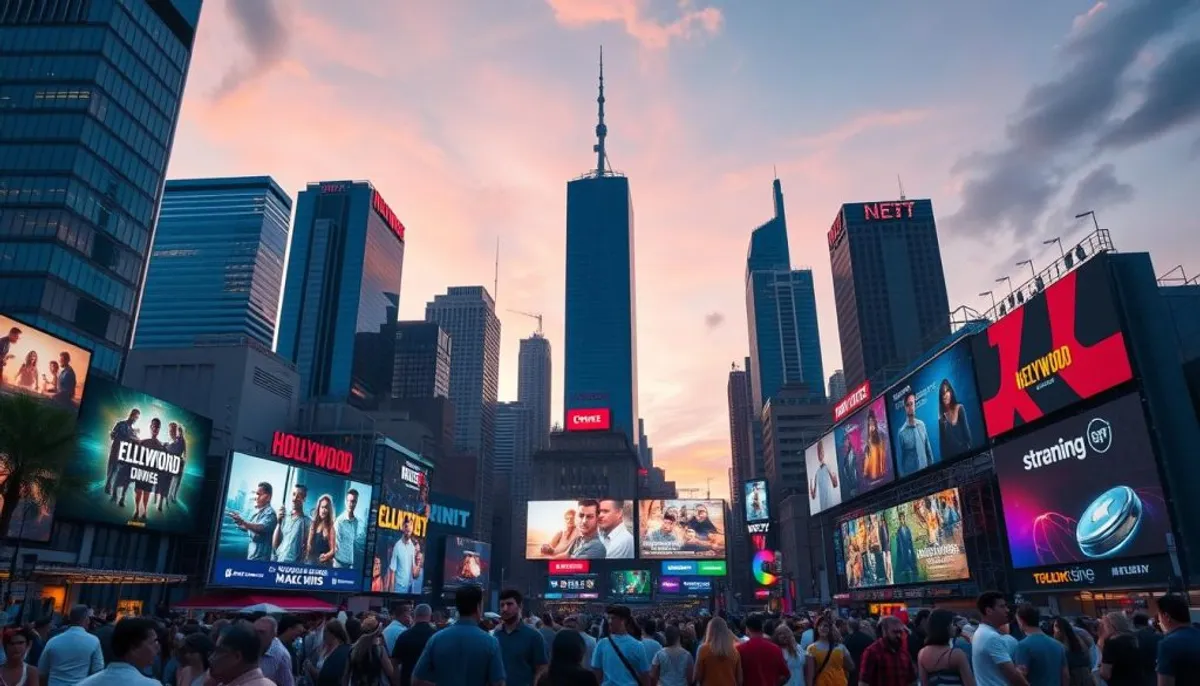Since our childhood, American cultural influence has been omnipresent. Disney, for example, has cradled the dreams of millions of children around the world. This cultural domination fits into the concept of soft power, developed by Joseph Nye. It refers to a country's ability to influence international relations without resorting to force.
The United States excels in exercising soft power. Their culture is a major tool for shaping the world in their image. Since the end of World War II, the American way of life has spread globally. This influence extends to food, fashion, media, and the arts.

Globalization has amplified this phenomenon. The numbers speak for themselves: over 80% of global audiovisual productions come from the United States. Giants like Warner Bros, Disney, and Netflix dominate the entertainment industry. This cultural hegemony raises questions about identity and cultural diversity in the age of globalization.
How American culture dominates the world
American culture exerts considerable influence on the global stage. Its impact is evident in various fields, shaping tastes and habits on a planetary scale.
American soft power as a tool of influence
The American film industry perfectly illustrates this cultural domination. In 2013, out of the 10 most-watched films in France, 9 were American. This statistic highlights the massive export of American cinematic culture. The United States, as the leading film exporter, thus contributes to the spread of its culture across the globe.
The export of the American way of life
The American way of life has established itself globally through iconic products. Coca-Cola, McDonald's, and jeans have become symbols of the economic and cultural influence of the United States. This omnipresence reflects the widespread adoption of the American way of life in many countries.
The impact of the English language in international exchanges
English, now a lingua franca, facilitates international exchanges in commercial, scientific, and diplomatic fields. Its adoption as a language of understanding reinforces the dominant position of the United States in global affairs. The integration of anglicisms into local languages reflects this growing linguistic influence.
| Field | Impact of American culture |
|---|---|
| Film | 9 out of the 10 most viewed films in France are American (2013) |
| Consumer products | Coca-Cola, McDonald's, jeans adopted globally |
| Language | English dominant in international exchanges |
| Media | Channels like ABC and CNN broadcast internationally |
| Internet | American services (Google, Facebook, YouTube) dominant |
American hegemony in global entertainment
American entertainment dominates the world, with Hollywood at the forefront. The American film industry has dominated international box offices for decades. In 1998, 38 of the most popular films worldwide were American. This trend has strengthened over the years.
The monopoly of Hollywood and streaming platforms
Hollywood cinema has become an essential reference for global entertainment. In 2004, the top ten films at the global box office were all American. The market share of American films reached impressive heights: 61.9% in Italy, 78.4% in Spain, and 83.8% in the United Kingdom.

Today, American streaming platforms have taken over, further extending the influence of USA-made content. These streaming giants massively broadcast Hollywood productions, reinforcing American cultural dominance in the digital age.
The music industry and its global reach
The American music industry exerts considerable influence on a global scale. American artists dominate international charts and shape global musical trends. This hegemony extends well beyond music itself, influencing fashion, language, and the behaviors of young people around the world.
The influence of American media on popular culture
American media plays a crucial role in the dissemination of popular culture. TV series, entertainment shows, and online content made in the USA flood screens worldwide. This omnipresence shapes the tastes, values, and aspirations of a global audience, thereby reinforcing American soft power and its grip on the global collective imagination.
The transformation of consumption habits
American influence has profoundly transformed eating habits and consumption on a global scale. Between 1945 and 2020, worker incomes saw a steady increase. This evolution fostered the emergence of a mass consumer society.
American brands have played a crucial role in this transformation. Between 1954 and 1975, the proportion of wage earners in the workforce rose from 65.6% to 83%. This increase created fertile ground for American consumption. The establishment of institutional mechanisms regulating wages and the development of social benefits reduced inequalities while reflecting the cultural trends of the time.

Mass consumption has revolved around housing, automobiles, and durable goods. The propaganda efforts to promote the American way of life have been considerable. The traveling exhibition “The True Face of the USA” highlighted the abundance and high standard of living of American workers.
| Year | Significant Event | Impact on consumption |
|---|---|---|
| 1954 | 65.6% of wage earners in the workforce | Beginning of the consumer society |
| 1975 | 83% of wage earners in the workforce | Consolidation of mass consumption |
| 1945-2020 | Steady increase in incomes | Expansion of American eating habits |
The adoption of mass consumption has become a political issue in the East-West confrontation. It has reinforced the influence of American eating habits on a global scale. This transformation has not only exported “junk food” but also introduced new trends such as “healthy food,” veganism, and the paleo diet. These trends illustrate the extent of American impact on our lifestyles.
The impact on the professional and digital world
Silicon Valley, home to American startups, is revolutionizing our work and communication. Its influence inspires global innovators, redefining the criteria for professional success.
The entrepreneurial model of Silicon Valley
The culture of American startups values risk and innovation. This model, focused on creativity and flexibility, is spreading worldwide. Incubators and coworking spaces are proliferating, illustrating the expansion of this entrepreneurial philosophy.
The dominance of American social networks
Social networks, primarily American, shape our communication and information consumption. Their impact transcends American borders, profoundly influencing local cultures and social behaviors on a global scale.
- Facebook has over 2.7 billion monthly active users
- Twitter strongly influences public and political debate
- Instagram and TikTok redefine the codes of visual culture
The export of American work methods
American management practices are spreading globally. Remote work, popularized by Silicon Valley, is now a global norm. American startups have also introduced “lean management” and agility, adopted by many international organizations.
Conclusion
The evolution of American influence since the 19th century is impressive. In 1897, the United States began to compete with Germany commercially. The idea of a global Americanization emerged as early as 1898. This rise intensified after 1945, when the United States accounted for half of global production.
American hegemony has manifested in several areas. Militarily, their army had over 3 million soldiers in 1953. Economically, they held nearly two-thirds of the world's gold stock after World War II. Politically, their influence was predominant, especially in Latin America and the Middle East.
However, global cultural diversity persists. Despite American predominance, nations like Germany, Japan, and France maintain significant influence. The emergence of a global culture incorporates elements of American capitalism, but it is not limited to it. This evolution highlights the complexity of contemporary global cultural dynamics.
RelatedRelated articles


